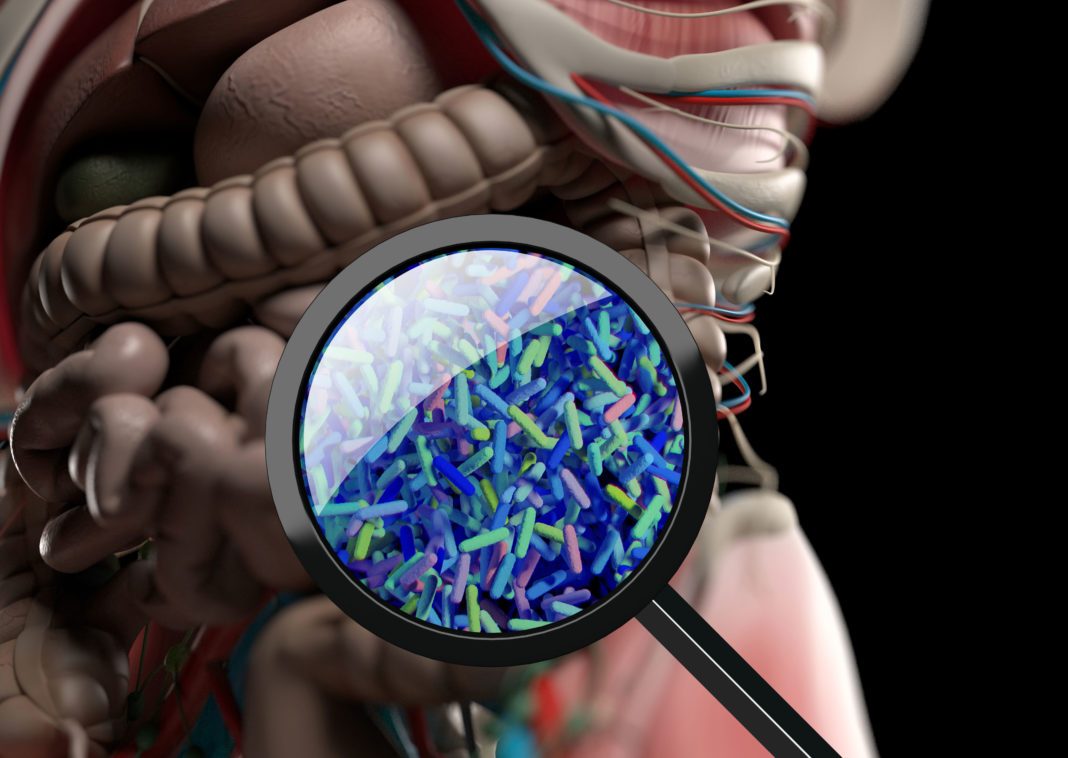Anyone can have a stroke at any age, but there are certain factors that increase the chances of having one. Now, new research from Cleveland Clinic demonstrates for the first time that the gut microbiome plays a role in stroke severity and functional impairment following stroke.
Their findings are published in the journal Cell Host & Microbe in a paper titled, “Gut microbes impact stroke severity via the trimethylamine N-oxide pathway,” and led by Weifei Zhu, PhD, and Stanley Hazen, MD, PhD, of Cleveland Clinic’s Lerner Research Institute.
“Clinical studies have demonstrated associations between circulating levels of the gut-microbiota-derived metabolite trimethylamine-N-oxide (TMAO) and stroke incident risk,” wrote the researchers. “However, a causal role of gut microbes in stroke has not yet been demonstrated. Herein we show that gut microbes, through dietary choline and TMAO generation, directly impact cerebral infarct size and adverse outcomes following stroke.”
“In this study, we found that dietary choline and TMAO produced greater stroke size and severity, and poorer outcomes in animal models,” explained Hazen, chair of the department of cardiovascular & metabolic sciences and director of Cleveland Clinic’s Center for Microbiome & Human Health. “Remarkably, simply transplanting gut microbes capable of making TMAO was enough to cause a profound change in stroke severity.”
The researchers previously discovered that elevated TMAO levels can lead to the development of cardiovascular disease.
“This new study expands on these findings, and for the first time provides proof that gut microbes in general—and through TMAO specifically—can directly impact stroke severity or post-stroke functional impairment,” said Hazen.
Brain damage in preclinical stroke models were compared between those with elevated or reduced TMAO levels. Over time, those with higher levels of TMAO had more extensive brain damage and a greater degree of motor and cognitive functional deficits following stroke.
“Fecal microbial transplantation from low- versus high-TMAO-producing human subjects into germ-free mice shows that both TMAO generation and stroke severity are transmissible traits,” wrote the researchers. “Furthermore, employing multiple murine stroke models and transplantation of defined microbial communities with genetically engineered human commensals into germ-free mice, we demonstrate that the microbial cutC gene (an enzymatic source of choline-to-TMA transformation) is sufficient to transmit TMA/TMAO production, heighten cerebral infarct size, and lead to functional impairment.”
“Functionality after a stroke—which occurs when blood flow to the brain is blocked—is a major concern for patients,” added Hazen. “To understand if choline and TMAO affect post-stroke functionality, in addition to stroke severity, we compared performance on various tasks pre-stroke, and then both in the short- and long-term following stroke.”
The team found that a gut microbe enzyme critical to TMAO production called CutC drove heightened stroke severity and worsened outcomes.
According to Zhu, targeting this gut microbe enzyme may be a promising approach to prevent stroke. “When we genetically silenced the gut microbe gene that encodes CutC, stroke severity significantly diminished,” she explained. “Ongoing research is exploring this treatment approach, as well as the potential for dietary interventions to help reduce TMAO levels and stroke risk, since both a Western diet and a diet rich in red meat are known to elevate TMAO levels. Switching to plant-based protein sources helps to lower TMAO.”



